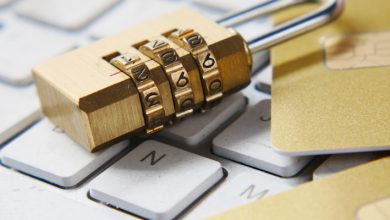How to Protect Your Crypto from Malware and Ransomware

- Understanding the Risks of Malware and Ransomware in the Crypto World
- Best Practices for Securing Your Crypto Wallet from Cyber Attacks
- Common Techniques Used by Hackers to Target Crypto Investors
- The Importance of Regularly Updating Your Security Software for Crypto Protection
- Tips for Recognizing and Avoiding Malicious Links and Phishing Scams
- Why Backing Up Your Crypto Wallet Is Essential for Safeguarding Your Investments
Understanding the Risks of Malware and Ransomware in the Crypto World
It is important to understand the risks associated with malware and ransomware in the crypto world. Malware is malicious software designed to gain unauthorized access to computer systems and steal sensitive information. Ransomware, on the other hand, is a type of malware that encrypts files on a victim’s computer and demands payment in cryptocurrency to unlock them.
Malware and ransomware pose a significant threat to cryptocurrency holders as they can result in financial loss and compromise the security of their digital assets. It is crucial to take proactive measures to protect your crypto holdings from these threats.
One way to protect your crypto from malware and ransomware is to ensure that your computer and other devices are equipped with up-to-date antivirus software. Additionally, you should avoid clicking on suspicious links or downloading attachments from unknown sources.
Furthermore, it is recommended to store your cryptocurrency in a secure wallet that offers offline storage options, such as a hardware wallet. By keeping your digital assets offline when not in use, you can reduce the risk of them being compromised by malware or ransomware attacks.
Best Practices for Securing Your Crypto Wallet from Cyber Attacks
When it comes to protecting your crypto wallet from cyber attacks, there are several best practices you should follow to ensure the security of your digital assets.
- Use a hardware wallet: Storing your cryptocurrency in a hardware wallet is one of the most secure ways to protect it from malware and ransomware attacks.
- Enable two-factor authentication: Adding an extra layer of security to your wallet with two-factor authentication can help prevent unauthorized access.
- Keep your software up to date: Regularly updating your wallet software and operating system can help patch any vulnerabilities that cyber attackers could exploit.
- Avoid phishing scams: Be cautious of emails or messages asking for your wallet information and never click on suspicious links that could lead to malware installation.
- Backup your wallet: Make sure to regularly backup your wallet and store the backup in a secure location to protect against data loss.
By following these best practices, you can significantly reduce the risk of cyber attacks on your crypto wallet and keep your digital assets safe and secure.
Common Techniques Used by Hackers to Target Crypto Investors
There are several common techniques that hackers use to target crypto investors. One of the most prevalent methods is phishing attacks, where hackers send emails or messages pretending to be from legitimate sources in order to trick investors into revealing their login credentials or other sensitive information.
Another technique used by hackers is malware, which is malicious software designed to gain unauthorized access to a user’s computer or device. Hackers can use malware to steal crypto wallets or private keys, allowing them to access and steal funds from investors.
Ransomware is also a significant threat to crypto investors. Hackers use ransomware to encrypt files on a user’s device and demand payment in cryptocurrency in exchange for the decryption key. If the ransom is not paid, the files may be permanently locked or deleted.
Additionally, social engineering is a common tactic used by hackers to manipulate investors into giving up their sensitive information. This can include posing as customer support representatives or pretending to be a trusted individual in order to deceive investors into providing access to their crypto assets.
The Importance of Regularly Updating Your Security Software for Crypto Protection
Regularly updating your security software is crucial for protecting your cryptocurrency from malware and ransomware attacks. It is essential to stay one step ahead of cyber threats by ensuring that your security software is equipped with the latest patches and updates to defend against evolving threats.
By keeping your security software up to date, you can strengthen your defenses and minimize the risk of falling victim to malicious attacks that could compromise your crypto assets. Hackers are constantly developing new techniques to exploit vulnerabilities, so it is important to be proactive in safeguarding your investments.
Failure to update your security software regularly can leave your cryptocurrency vulnerable to cyber threats, putting your financial security at risk. Investing in reliable security software and staying vigilant with updates is a small price to pay compared to the potential losses that could result from a security breach.
Tips for Recognizing and Avoiding Malicious Links and Phishing Scams
When dealing with crypto, it is crucial to be vigilant when it comes to recognizing and avoiding malicious links and phishing scams. These deceptive tactics are commonly used by cybercriminals to steal your sensitive information and gain access to your crypto assets.
Here are some tips to help you stay protected:
- Always double-check the URL of any website before clicking on it. Look for any misspellings or suspicious characters that may indicate a fake site.
- Avoid clicking on links in unsolicited emails or messages, especially those that ask for your personal information or login credentials.
- Be cautious of pop-up ads or messages that urge you to take immediate action or offer deals that seem too good to be true.
- Consider using a browser extension or security software that can help detect and block malicious links before you click on them.
- If you are unsure about the legitimacy of a link, contact the sender directly through a verified channel to confirm its authenticity.
By staying vigilant and following these tips, you can protect your crypto assets from falling victim to malware and ransomware attacks. Remember, it’s always better to be safe than sorry when it comes to safeguarding your digital wealth.
Why Backing Up Your Crypto Wallet Is Essential for Safeguarding Your Investments
Backing up your crypto wallet is crucial for protecting your investments from potential threats like malware and ransomware. By creating a backup of your wallet, you can ensure that even if your device is compromised, you will still have access to your funds. This extra layer of security is essential in the volatile world of cryptocurrency, where hackers are constantly looking for ways to steal digital assets.
Without a backup of your wallet, you risk losing all of your investments in the event of a cyber attack. By taking the time to create a backup, you can rest easy knowing that your funds are safe and secure. Additionally, regularly updating your backup ensures that you have the most up-to-date information in case of an emergency.
It’s important to remember that simply creating a backup is not enough – you must also store it in a secure location. Consider using a hardware wallet or encrypted USB drive to store your backup, and keep it in a separate location from your primary device. By following these best practices, you can protect your investments and safeguard your financial future.



